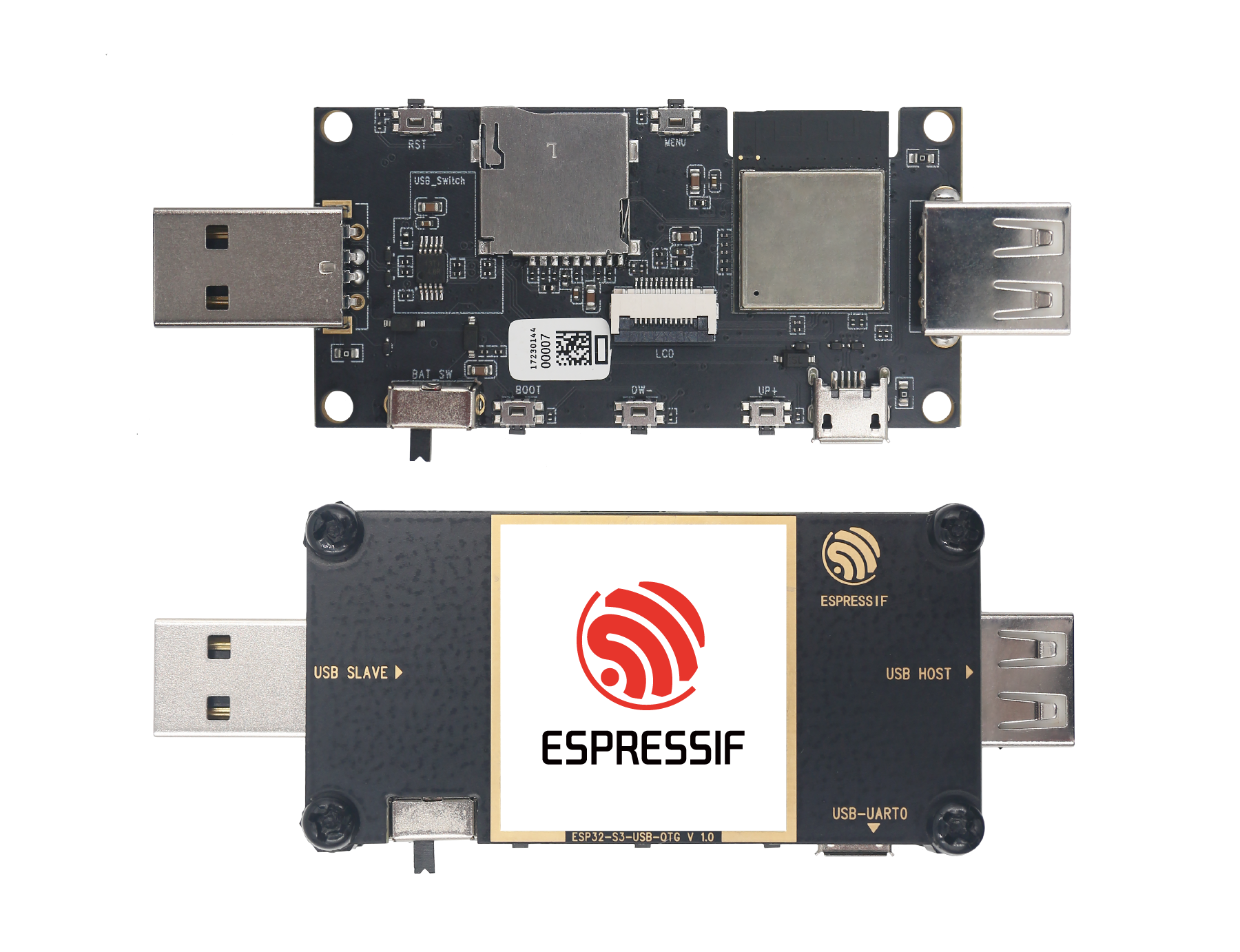- Home
- Hardware
- SDKs
- Cloud
- Solutions
- Support
- Ecosystem
- Company
- Contact
news
ESP-USB: Espressif’s Wireless Communication Solution
Shanghai, China
Sep 29, 2021
A USB interface is integrated into Espressif's ESP32-S series of SoCs, enabling various applications.
A USB (Universal Serial Bus) is an industry standard that enables communication between a host controller and peripherals or other devices. A USB interface is integrated into Espressif's ESP32-S series of SoCs. Combined with the SoCs' Wi-Fi functionality, the USB interface can be used for video streaming over Wi-Fi, accessing the Internet through a 4G hotspot, connecting to a wireless USB disk, and many other applications.
More specifically, ESP32-S2 has various peripheral interfaces, including SPI, I2S, I2C, UART, LED PWM, LCD, Camera, ADC, DAC, and other common interfaces. On top of that, ESP32-S2 has a full-speed USB On-The-Go interface that supports both host and device modes. This way, ESP32-S2 operates either as a USB host connecting to various USB devices, or as a USB device communicating directly with a computer or a mobile device. To ensure a better user experience, you can use the native USB interface of ESP32-S2 to download firmware at a higher speed compared to the traditional UART interface.
In addition, the USB-to-serial port of ESP32-C3/S3 allows transparent data transmission between the USB virtual COM port and the UART port. With a single ESP32-C3/S3, the USB-to-serial adapter is no longer required for serial port debugging and printing.
Next, we will describe four applications developed with the USB interface of ESP32-S2, involving a USB camera, 4G networking, a wireless USB disk, and a USB touchpad.
1. USB Camera
With its native USB interface, ESP32-S2 can connect to a camera that supports USB Full-Speed mode. A single ESP32-S2 is enough to achieve USB camera streaming, local JPEG decoding, LCD real-time refreshing, image transmission over Wi-Fi, TF card storage, and many other functions that can be used in diverse application scenarios, such as smart doorbells, smart-home appliances, and wireless surveillance cameras. Compared to the traditional digital-video port (DVP), the USB interface requires fewer IO pins, while it enables a longer transmission distance and better compatibility.
2. 4G Networking
To achieve a dial-up Point-to-Point Protocol connection to the Internet, you can connect ESP32-S2 to a 4G module through the USB interface. Moreover, nearby mobile phones and IoT devices can also connect to the internet via the ESP32-S2 Wi-Fi hotspot. Based on this, you can implement low-cost, low-power 4G networking applications, such as portable 4G Wi-Fi hotspots and IoT gateways.
3. USB Disk
The USB interface of ESP32-S2 can also be utilized for developing mass-storage devices, such as wireless USB disks, card readers, and music players.
To use ESP32-S2 as a large-capacity USB disk, and share the files on the USB disk, using the Wi-Fi connectivity provided by ESP32-S2, you should do the following:
First, plug ESP32-S2 into your computer as a common USB disk. Then, you can view, read, and write files on the USB flash drive.
Next, connect your mobile phone to the Wi-Fi hotspot shared by ESP32-S2, and then enter the file server address into the browser. This way you can view, download, and transfer files. Then, you can also share files with multiple users of different operating systems, without plugging and unplugging the USB disk.
4. Human Interface Device
Based on the ESP32-S2 USB interface, you can also develop human-computer-interaction applications that transmit control signals in real time, such as a USB keyboard, a mouse, or a gamepad. For example,
- You can use ESP32-S2 as a computer touchpad to control the cursor.
- You can also use a 3 * 3 numeric keyboard as an input device for the computer.
ESP32-S2 can also function as a host that receives control signals from a keyboard or a mouse. Alternatively, you can also use ESP32-S2 to develop: USB dial-up devices, MIDI instruments or sound cards, gamepads, printers and scanners, smart cards, and Bluetooth adapters.
If you’d like to learn more about ESP-USB, Espressif’s Wireless Communication Solution, or if you have any questions about it, please contact our customer support team who will try and help you as soon as possible. ESP-USB will reach international electronics distributors in about a month.

Below you can find various resources of ESP32-S2/S3 USB Demo Code on GitHub. (N.B. ‘Readme’ docs are available only in Chinese for the time being. However, they will be updated with an English version in due course.)


 LinkedIn
LinkedIn 微信
微信
 Twitter
Twitter Facebook
Facebook
